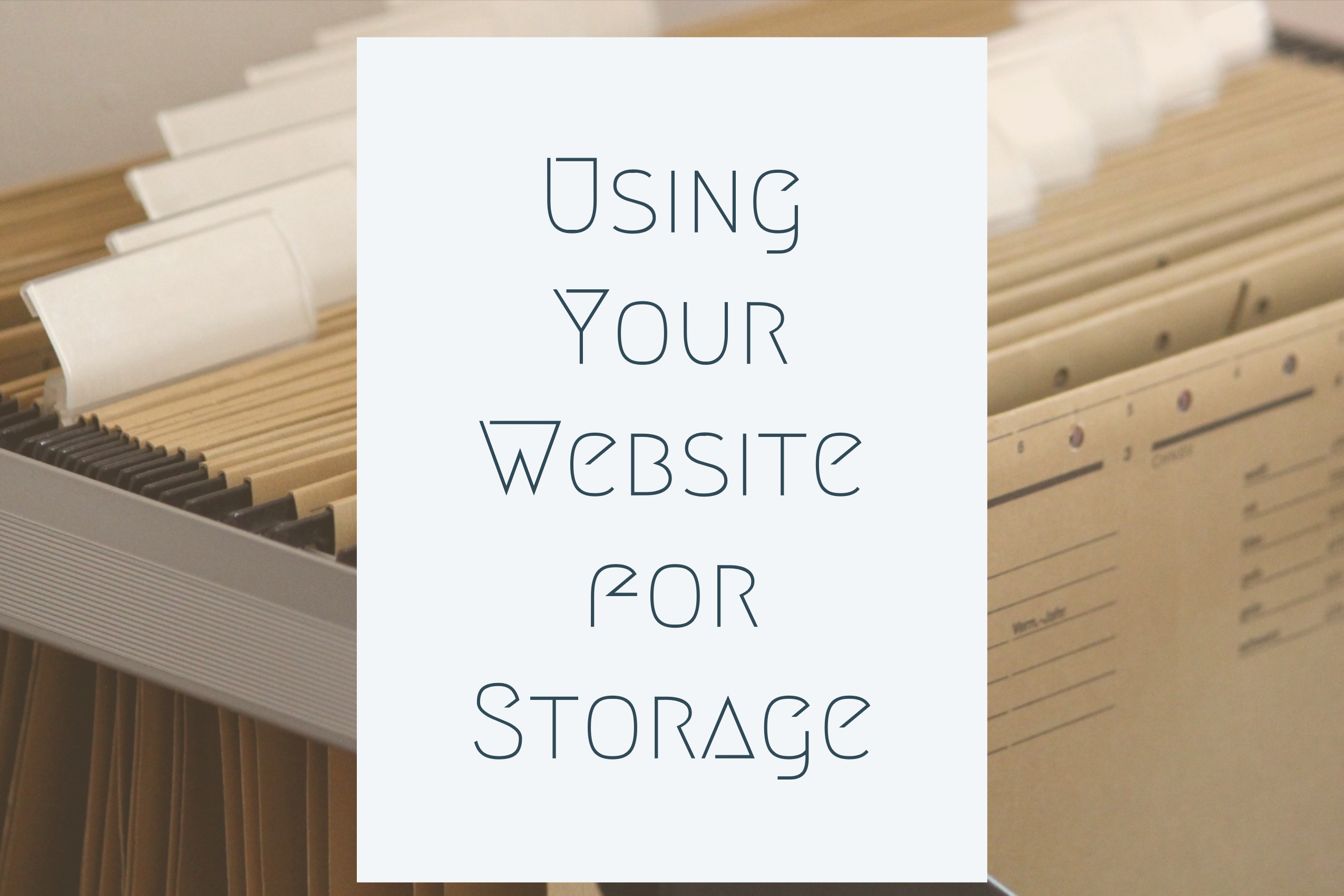What’s in your media library? There are some things that should be there:
- Your logo and other brand identity assets
- Pictures of your goods and, if possible, services
- Pictures of your team, your building or offices, and other brand images
- Images that illustrate your blog posts
- Patient forms
- Company newsletters
- Ads and promotional images
- White papers and other lead magnets visitors can download
But we’ve noticed that many of our clients want other things in their media libraries, too.
- All their organization’s photos, from snapshots of the company picnic to portraits of volunteers from the past three decades
- Historical documents
- PDFs linked to… in case they are removed from the websites where they currently live
- Job applications from the past
In other words, they’re using their websites for storage.
Is it good to use your website for storage?
First, make sure you don’t have limited storage space at your website. The screenshot below shows prices for one hosting company, including the bandwidth limits for storage. Your web host should be able to provide these figures as well.

The screenshot below shows usage at a variety of websites. Notice that the sites using the most storage space are not necessarily the sites using the most bandwidth.

Check your hosting plan and your storage usage before you decide whether or not you can use your website for storage.
If your website is nearing the storage limits, you can reduce the amount of space you’re using by optimizing your images and your documents. You might also examine what you’re saving with a critical eye. If you have lots of images that aren’t being used effectively or seen by many visitors, they could be better off in Google Pictures or Amazon Prime Photos. The same is true for documents that aren’t being used. If you exceed your limits, you may have to pay extra or your website might slow down.
If space and bandwidth are not issues, there’s nothing wrong with using your website to store images and documents.
Effective storage
There’s a difference between an organized file cabinet and a big stack of random papers. It’s not useful to have thousands of photos or documents stored at your website if you can’t find them again.
One useful tool is the Media Library Folders plugin. By default, your media items will be stored in dated folders. However, you can label and organize your folders as you please.

This is the best plugin we’ve found for organizing large numbers of media assets.
You can also develop habits that make it easier to keep track of your files. For example, you might have media files with names like the ones in the screenshot below: “IMG_4001” and “IMG_3965.”

When you suddenly realize that you have a great photo of a painted ceiling in storage, what are the chances that you will think, “Ah, yes — IMG_3949”?
Very slim.
Even if you have an eidetic memory, there’s no reason to rely on it. Use meaningful titles instead. They’re better for SEO, too.
Use those assets
If it’s worth storing, it’s probably also worth using. Bring those images out by using them to illustrate (and perhaps to inspire) blog posts.
Documents, too. If you’re storing old newsletters, use them to highlight new technology or changes in procedures over time. Speeches or interviews? Pull out quotes and base posts on them.
Chances are, if they’re worth the bandwidth to store them, your stored assets have potential doing what media library items are supposed to do — providing more value for your visitors.
Sometimes you have to think outside the box to connect stored items to the keywords your visitors use to find your goods and services. If you need help, give us a call or use our easy contact form. We’d love to help.


Leave a Reply